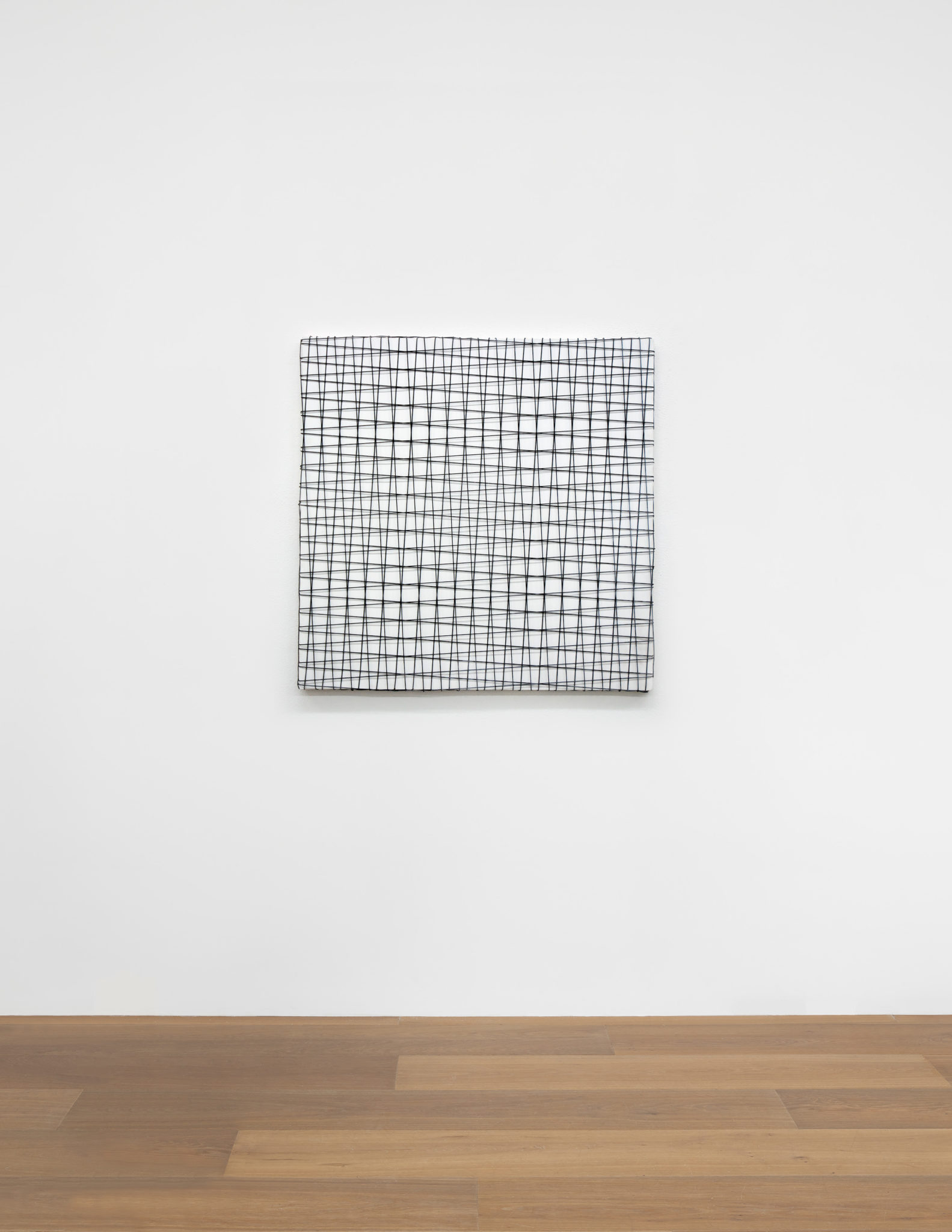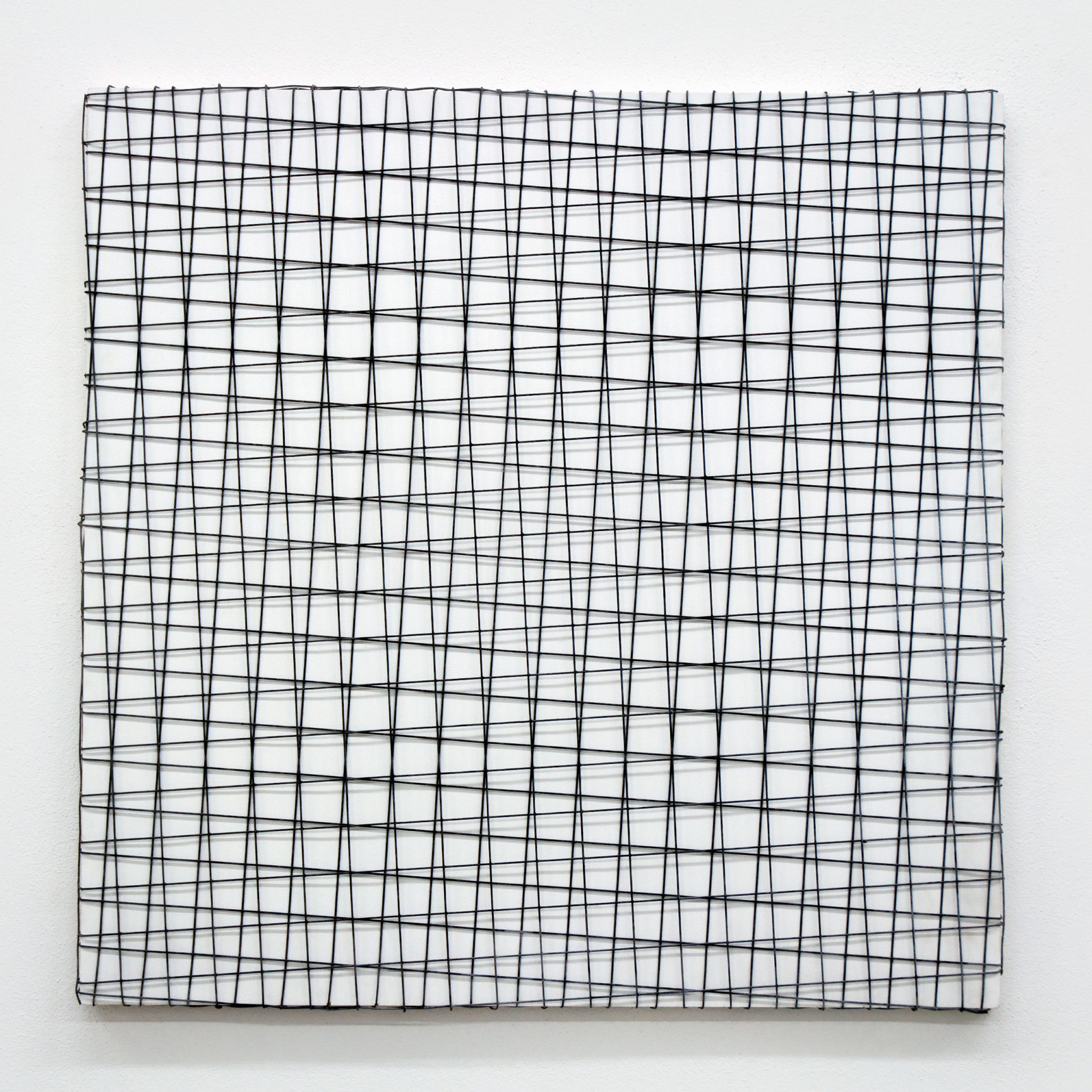François Morellet
2 trames de grillage –4° +4°, 1978
Wire netting on wood
39 ⅜ × 39 ⅜ inches (100 × 100 cm)
© 2018 François Morellet / Artists Rights
Society (ARS), New York / ADAGP, Paris
Over the course of more than six decades, François Morellet developed a singular approach to geometric abstraction, pursuing methodologies of rigorous objectivity with a sense of irreverence and unpretentious humor. Insisting that “art is frivolous even when it takes itself seriously,” he strove to produce an art that was accessible to all, unencumbered by messages and meanings beyond its immediate content.
The present work, 2 trames de grillage – 4° + 4°, 1978, reflects Morellet’s embrace of a wide variety of materials, including adhesive tape, iron, neon tubes, steel, silkscreen ink, and, as in this case, wire mesh and wood. It makes use of Morellet’s signature form: the trame, or grid, which he began using in the early 1950s. The work’s title declares its logic: it consists of two wire grids, each angled 4° from the vertical in opposite directions, which overlay an evenly painted panel of wood. When superimposed, they animate the canvas with a shimmering flicker. This sense of vibratory motion is heightened by the sculptural nature of the wire, which slightly protrudes from its wood support, casting shadows that join in the optical play of the doubled trames. A founding member of the Groupe de Recherche d’Art Visuel (GRAV), Morellet was drawn to optical effects for their ability to activate the spectator, transforming him or her into a creator of dynamic perceptual experiences.
Morellet’s use of grids further alludes to Piet Mondrian—an abiding influence on his work—whose Neo-plastic compositions were defined by rigid arrangements of straight lines and planes. His choice to successively tilt his grids, filling the canvas with mesmerizing mesh of diagonal lines, subtly plays with Mondrian’s legacy, as the De Stijl artist famously abhorred all spatial coordinates except for strict verticals and horizontals. Through his 4° rotations, Morellet thus challenges what he described as the “sacrosanct horizontality-verticality” of the Western pictorial tradition, introducing effects of slant and skew that playfully disorient the viewer. His decision to create his grids using wire rather than traditional artist’s paints further removes his subjectivity from the work, precluding any possibility for gestural expression. Throughout his life, Morellet strove to achieve anonymity, conceiving his artworks as “picnics” to which viewers could bring their own idiosyncratic meanings and associations. Contesting notions of the artist as an inspired genius, his work achieves complexity through its embrace of simplicity and repetition.


